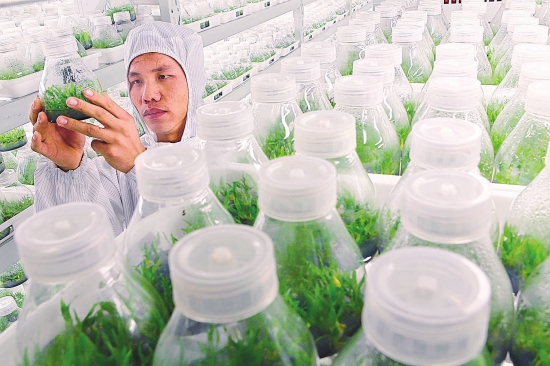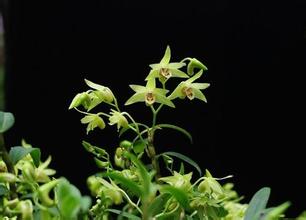'Plant cloning' tech protects Tibet’s endangered medicinal plants
There are more than 20 kinds of endangered medicinal plant in Tibet that are currently being artificially bred and cultivated with “plant cloning” technology, such as rhodiola and Himalayan mirabilis.
Culturing plant tissue technology is also called “plant cloning”. This kind of technology uses fewer materials, is not subject to seasonal restrictions, and has genetic stability. Not only does it help to artificially breed some rare and endangered plants, it also protects the integrity of wild plants and their natural habitats to the highest degree.

Dendrobium candidum is one of such rare and endangered wild plants. Its medicinal value is high, but it has few yields, scattered only in Dinggye County of Shigatse and Pome County of Nyingchi. A demonstration project to artificially breed and cultivate dendrobium candidum was officially launched at the beginning of 2014. After the processes of seed germination, raising the seeds, and refining, success in artificially breeding the endangered dedrobium candidum was achieved.

The success of the project, on the one hand, provides scientific basis for the protection of wildlife resources in future; on the other hand, it will provide technical support for the development of locally advantageous resources, promoting the development of locally efficient agriculture and increasing farming incomes.
In addition, artificial breeding has already been achieved in 10 kinds of endangered medicinal plants and been extended to several Tibetan medicine enterprises. A national patent was earned in 2001 for the technology to artificially breed the female strand of Herpetospermum pedunculosum, a medicinal plant. Tibetan gentian is a type of flower with medicinal uses. Artificial breeding of Tibetan gentian was achieved in 2009.
There are 74 kinds of endangered medicinal plants that grow in Tibet (data updated in 2005).
Your Comment
Name E-mailRelated News
-
;
-
-

-
High-tech helps ecology monitoring: Qinghai Sanjiangyuan
The Ecological Environment Monitoring Center of Qinghai Province has established the ecological environment monitoring system recently.
-
-
-

-
High tech helpers for water and soil conservation in Tibet
In 2016, Tibet used drones for low altitude and remote monitoring of water and soil loss at 34 test sites for 11 mid- to large-scale programs.
-
-
-

-
National standards for information technology vocabulary in Tibeta
The “Information Technology vocabulary in Tibetan” was formally published by China Standards Press.
-
Based in Lhasa, Tibet Vista is a Tibet travel agency that specialized in Tibet permit, and Tibet tours for both private and group travelers at a local price!
•4 Days Lhasa City Group Tour from USD 460 •8 Days Everest Base Camp Group Tour from USD 850 •15 Days Mt.Kailash Group Tour from USD 1780 •2016 Tibet Train Tours from Beijing, Shanghai, Chengdu, Xining,etc










